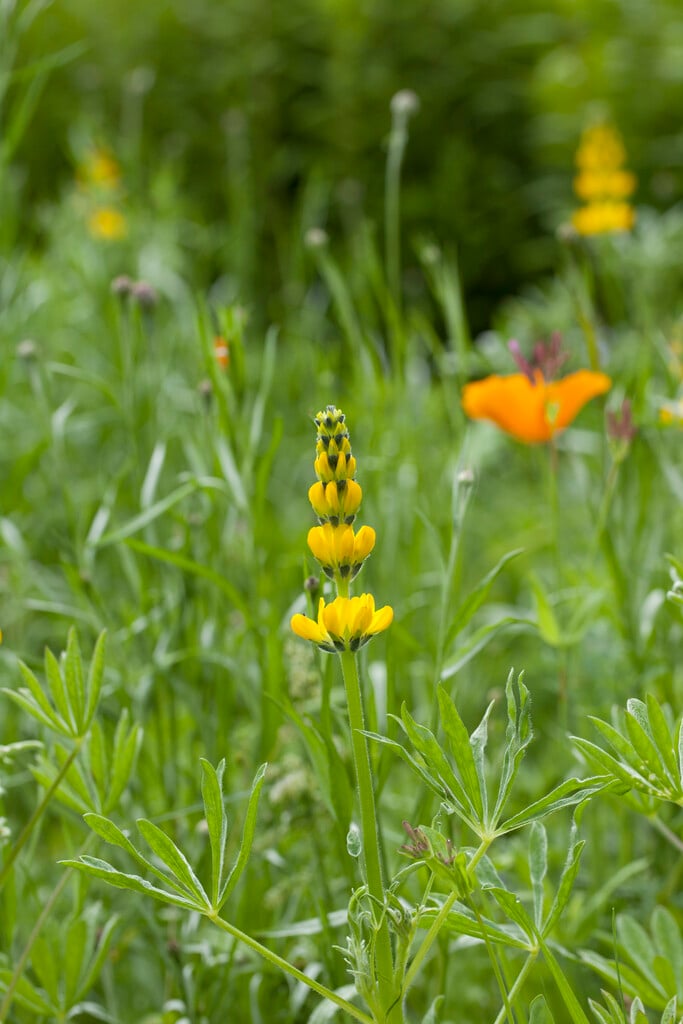Lupinus luteus
yellow lupin
A bushy annual to around 60cm high, with palmate leaves divided into up to 9 narrow leaflets. Stems and leaf undersides are coated with downy silvery hairs. Upright spikes of pea-like, golden yellow flowers are produced in late spring and early summer, and followed by seeds which can be edible when processed correctly
Size
Ultimate height
0.5–1 metresTime to ultimate height
1 yearUltimate spread
0.5–1 metresGrowing conditions
Moisture
Well–drainedpH
Acid, NeutralColour & scent
| Stem | Flower | Foliage | Fruit | |
| Spring | Yellow | Green Grey Silver | ||
|---|---|---|---|---|
| Summer | Yellow | Green Grey Silver | ||
| Autumn | Green Grey Silver | |||
| Winter |
Position
- Full sun
Aspect
South–facing or West–facing
Exposure
Exposed or Sheltered Hardiness
H3Botanical details
- Family
- Fabaceae
- Native to GB / Ireland
- No
- Foliage
- Deciduous
- Habit
- Bushy, Columnar upright
- Potentially harmful
- Harmful if eaten. Wear gloves and other protective equipment when handling. TOXIC to pets if eaten (dogs, cats, rabbits, tortoises) - see the HTA guide to potentially harmful plants for further information and useful contact numbers
- Genus
Lupinus can be annuals, perennials or shrubs, with palmate leaves and showy terminal racemes of pea-like flowers
- Name status
Correct
How to grow
Cultivation
Grow in light, ideally slightly acidic, well-drained soil in full sun. The roots are nitrogen-fixing, so can be used as a summer green manure if plants are not allowed to seed
Propagation
Propagate by seed
Suggested planting locations and garden types
- Coastal
- Cottage and informal garden
- Gravel garden
- Wildflower meadow
- Flower borders and beds
Pruning
Deadhead to encourage more flowers, unless seeds are required
Pests
May be susceptible to lupin aphid, slugs and snails
Diseases
May be susceptible to powdery mildews, lupin anthracnose and virus diseases
Get involved
The Royal Horticultural Society is the UK’s leading gardening charity. We aim to enrich everyone’s life through plants, and make the UK a greener and more beautiful place.

